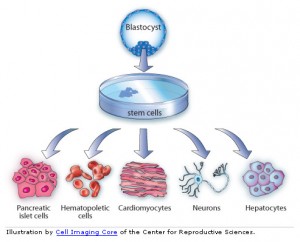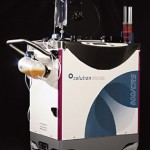Suzanne Somers used Belly Fat Stem Cells to grow Her New Breasts

Suzanne Somers is no stranger to medical controversy
For instance, the Three’s Company actress and Thigh-Master guru has claimed that her continued youthful appearance is due to bioidentical hormone replacement therapy (BHRT)*.
In 2001, Somers was diagnosed with breast cancer. She had a lumpectomy and radiation, but declined to undergo chemotherapy.
In November, 2008, Suzanne Somers announced she was diagnosed with inoperable cancer by six doctors, but learned a week later that she had been misdiagnosed. During this time, she interviewed doctors about cancer treatments and these interviews became the basis of her book, Knockout: Interviews with Doctors Who Are Curing Cancer-And How to Prevent Getting It in the First Place. In her book, Somers promotes alternative cancer treatments, for which she received harsh criticism from the American Cancer Society.
This week, Somers revealed something new - a new breast, reconstructed using an experimental procedure!
The procedure, called Adipose Derived Stem Cell Breast Reconstruction, was performed at the Hollywood Presbyterian Medical Center last August by Plastic Surgeon Dr. Joel Aronowitz.
The procedure was first performed by Dr. Keizo Sugimachi in Japan, and later underwent research trials in several European centers. Ms. Somers was enrolled as the first human subject in the U.S. research trial:
What are Adipose Derived Stem Cells?
Adipose tissue is just another name for body fat. Fat grafting, also known as fat transfer or fat transplantation, has been available for many years. In layman’s terms, it means sucking fat out of one (presumably undesired) place and injecting it into another (preferred) one. However, according to Dr. J. Peter Rubin, Chief of Plastic Surgery University of Pittsburgh:
The biggest problem encountered with fat grafting is that fat can lose volume or be absorbed by the body over time, leaving less of an affect from the original treatment.
 However, fat tissue is made up of more than fat cells. It also contains those darlings of gene therapy-stem cells! And fat tissue contains proportionately more stem cells than other tissues- roughly one stem cell per 100 fat cells, compared to bone marrow, which contains one per 250,000 to 400,000 cells.
However, fat tissue is made up of more than fat cells. It also contains those darlings of gene therapy-stem cells! And fat tissue contains proportionately more stem cells than other tissues- roughly one stem cell per 100 fat cells, compared to bone marrow, which contains one per 250,000 to 400,000 cells.
Stem cells are special cells that can divide and change into diverse specialized cell types and can self-renew to produce more stem cells. In adults, stem cells act as a repair system for the body, repairing adult tissues by releasing chemicals that encourage growth and by encouraging the formation of blood vessels to nourish the tissues.
Using fatty tissue that is enriched with stem cells may prevent some of the problems associated with simple fat grafting.
How are they used in Breast Reconstruction?
According to Dr. Aronowitz, “Stem cell treatment has the advantage of producing a natural regrowth of fat tissue within the breast, giving it a soft, natural appearance and feel using the woman’s own fat.”
In the procedure:
1. Fat tissue is removed from the abdomen, hips, and/or thighs (about 400-600 cc), using routine liposuction techniques.
2. The removed fat is divided into two portions:
 One half is put into a special machine which, in a “complex series of washings and high-speed centrifugations”(called a “celutron”-picture right), separates the fat from the stem cells. Almost a million cells on average are isolated from each 1 cc drop of liposuction fat.
One half is put into a special machine which, in a “complex series of washings and high-speed centrifugations”(called a “celutron”-picture right), separates the fat from the stem cells. Almost a million cells on average are isolated from each 1 cc drop of liposuction fat.- Those stem cells are then added to the other half of the collected fat.
3. The mixture is injected into the breast to fill in the defects.
Dr. Aronowitz also reports that:
Improved breast size is immediate, but the improved skin quality and regeneration or regrowth of fat takes about 3 to 6 months as the larger fat cells that do not survive the transfer process are replaced by new tissue regenerated by the large numbers of tiny stem cells. Improvement in the texture, quality and skin color of the breast damaged by surgery and radiation begins immediately and begins to show clinically in about 2 months.
Are there any concerns about the procedure?
For most new drugs or surgeries, doctors perform human subject research (a.k.a. clinical trials) on volunteers:
- To see if the procedure does what it says it will do
- To assess the safety of the procedure
- To see how long the results will last
- To see if there are complications that may show up later down the road
Dr. Rubins has outlined some of the issues that researchers are looking for in the clinical trials for this procedure.
1. Can the beneficial growth effects of stem cells cause regrowth of breast cancer cells?
Dr. Rubins has studied breast cancer cell growth in the presence of stem cells. Fast-growing cancer cells can be influenced by stem cells, but dormant (non-active) breast cancer cells do not appear affected. He recommends that the procedure would therefore be best for patients who are clinically free of cancer. This may have some bearing on the time of the reconstruction.
2. Will the surgery interfere with follow-up screening for breast cancer?
Any injection of fat into the breast may produce scaring and small calcifications in the breast. These are some of the changes that radiologists look for on mammogram to detect cancer . Could this lead to a high rate of unnecessary biopsies? Fortunately, so far, the results do not appear to be different from those found in patients who have undergone breast reduction surgery. Making sure the radiologist knows your full medical history is probably the most important lesson here.
3. Are there any other complications we should know about?
As in any fat grafting procedure, the fat can form hard lumps. This is known as fat necrosis, and is a type of scarring. It may cause dimpling of the skin over it and can be tender to touch.
In Summary:
Adipose derived stem cell breast reconstruction is an exciting prospect for breast cancer survivors. But it is still considered experimental and should be thoroughly studied before it should be considered the “standard of care.” Suzanne Somers is premature in her call for the procedure “to be the first option” for women with breast cancer.
The use of this technology in other areas of the body also shows great promise. Dr. Rubins says he is running a special clinical trial using adipose derived stem cells for wounded warriors with facial injuries.
———-
*BHRT is a poorly-defined term referring to the use of plant-based hormones that are identical, on a molecular level, with endogenous hormones in hormone replacement therapy. It has been promoted as a cure for many diseases beyond the relief of menopausal symptoms and/or reducing the risk of osteoporosis (the goals of traditional hormone replacement therapy). There is no evidence to support these claims.
























1 Comment